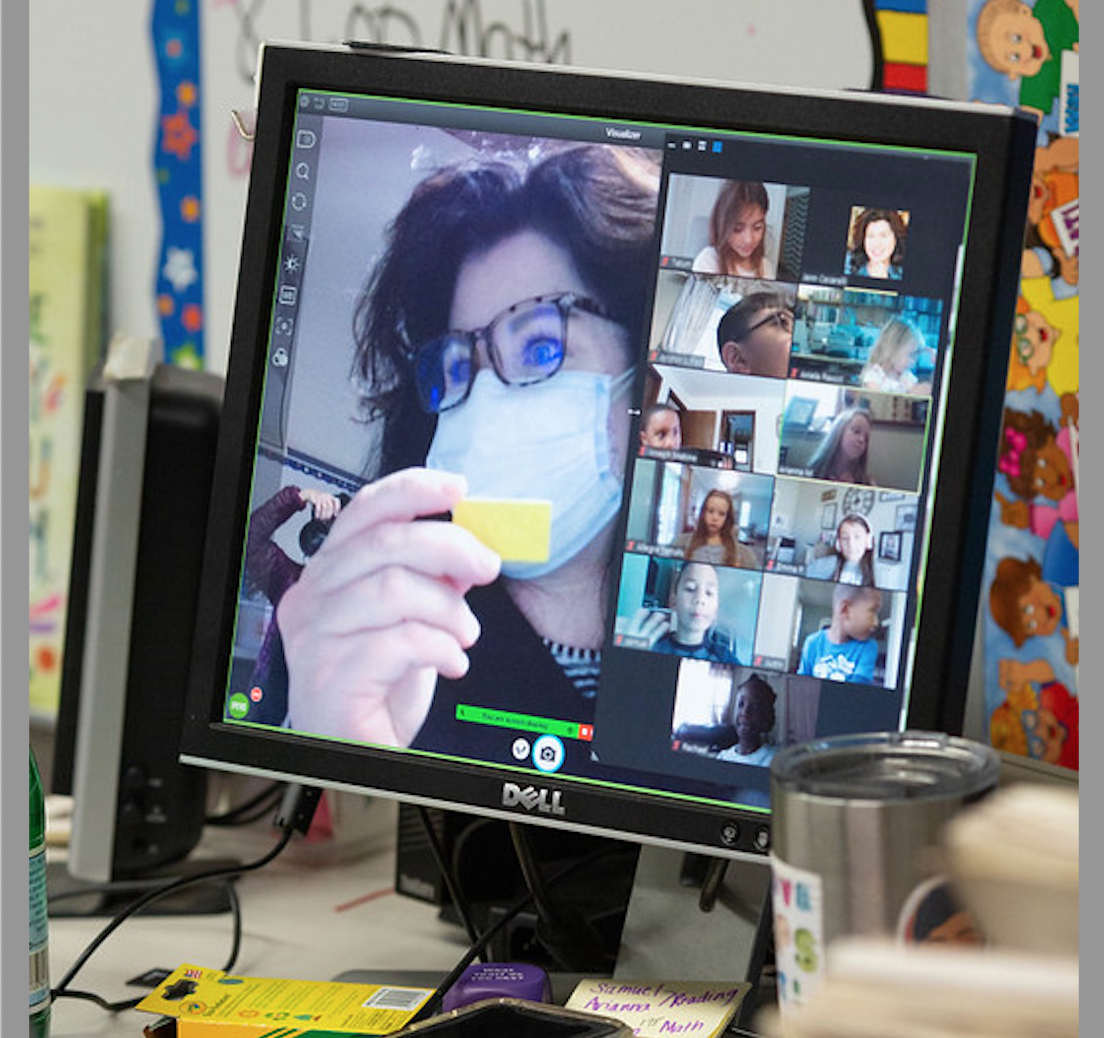Sign up for our daily edtech news briefing today, free.
It has been 18 months since schools first closed, and we are still learning how to make virtual environments rich and engaging. We have all had moments of encouragement and feelings of frustration. And while remote instruction isn’t for everyone, it can be a powerful way to deliver instruction, build connections and foster a love of learning in students — if you do it right. Very little in teaching can truly be boiled down to five simple strategies (teaching is hard, and those who do it are heroic), but these suggestions can add to your remote-teaching skills.
Lights, camera, action
Even though you are not sharing a physical space with your learners, you still share a virtual space, so consider it carefully. Figure out where you can get the best light, the best background, and the best sound. Use lighting strategically and invest in a good webcam. The last thing anyone needs is a teacher who looks like they are hiding in the shadows. If the walls are blank, hang up some posters, add splashes of color, life, and personality. Let students know you care by creating a space that welcomes them in.
Get physical
There is a good chance you and your students have been sitting…a lot. Find ways to incorporate movement, even if it is just a minute to stand and stretch. Do some jumping jacks or, if you have elementary school students or less cynical high school ones, try a GoNoodle. Even better? Teach some physical classes. It is possible to teach fitness, gymnastics, judo, and anything you can imagine live and online.
Smile before Christmas
I remember the advice to teachers used to be “Don’t smile before Christmas,” with the point being that a strong start for the year meant being strict. Rules help and can be a strong foundation for any learning environment — brick and mortar or virtual — but connections matter too. Show your students you are human, and know they are too. Ask them questions about their lives, take time to get to know them, learn what they love and share what you are passionate about in and out of the classroom. Just because you are not in the same room doesn’t mean you can’t touch someone’s heart.
Loud can mean lively
Think about your online classroom like you might your in-person one. Sometimes you truly need back-straight, eyes-forward students who are quietly focused on you — but break out of that and make it lively whenever possible. Incorporate music as students join (have them help you make a playlist!), giving them chances to talk to each other in the virtual classroom or in breakout rooms. Look for ways to make it fun. When kids can’t keep themselves from shouting out an answer, it often means you are doing something amazing!
Think about creating some fun or silly virtual classroom time where kids can be creative or even build into the curriculum added resources like Outschool, which offers extracurricular activities such as escape rooms, magic classes, and fun Lego challenges. Encourage your students to use headphones, and take turns so that your soft-spoken students have the chance to hear and be heard.
Community matters
Focus on building a community in your classroom, not just through norms but through producing things together, problem-solving and collaboration. Find a strong community for yourself too, where other teachers can give you ideas, help you check your sanity and lift you up. Even when we are in our own homes, we can find ways to surround ourselves with others.
Some learners and teachers are remote because they have to be, but many more are choosing to learn and teach remotely because of the possibilities it opens up. A whole new digital world is at your fingertips, no matter where you’re teaching. So go out there and make the most of it!
To learn more about how to master virtual teaching, be sure to check out Outschool’s recent partnership with Logitech: the Logitech Teacher Studio, which helps support Outschool educators. This five part professional development series covers the resources and best practices educators need to effectively deliver online lesson plans and promote student success in virtual environments.
Amy Yamner Jenkins is the head of schools and distribution for Outschool, an online marketplace for live, virtual classes for kids aged three to 18. She has spent more than 20 years working in education in roles such as a middle-school teacher in Oakland, Calif.; an after-school program provider in San Francisco; an investor through NewSchools Venture Fund; and chief operating officer of Education Elements. Jenkins is a frequent speaker at education conferences and the author of several publications.
Have a TechTip you want to submit to SmartBrief? On Tuesdays, SmartBrief Originals publishes fresh pieces, written by educators, that address issues in the edtech space. Pieces should be between 450 and 600 words and include an author bio and headshot. You can send pitches and submissions to editor Katie Parsons at [email protected].
___________________________________________________________
If you liked this article, sign up for SmartBrief’s free email newsletter on EdTech. It’s among SmartBrief’s more than 250 industry-focused newsletters.
More from SmartBrief Education:
- Powerful social media solutions for students
- How comics curriculum boosts SEL
- Free resources for educators during the coronavirus pandemic
- 8 ways to make vocabulary instruction more effective
